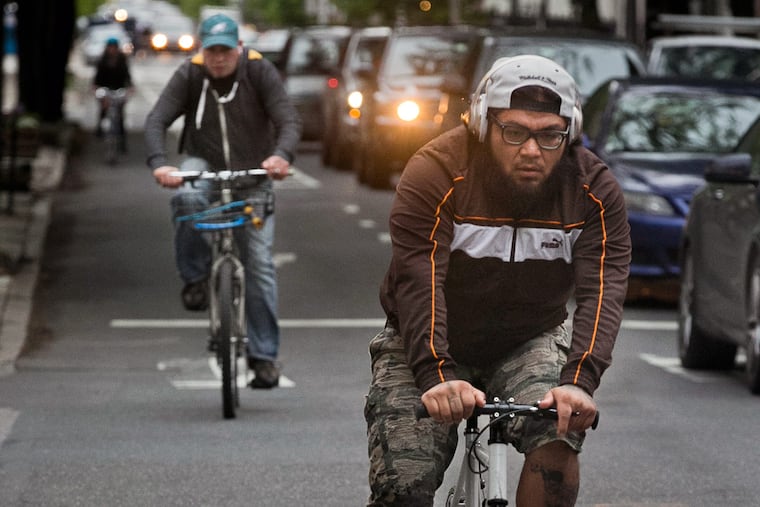No separation of church and cyclist needed | Editorial
Faithful congregants of Center City houses of worship and equally devoted cyclists may not be as far apart on the issue of courtesy parking in bike lanes on Saturdays and Sundays as they may appear.

Friction over people parking in bike lanes to attend weekend worship services while cyclists struggle to safely navigate the same streets is a good reminder of the unprecedented, competing, and growing demands on Center City’s constrained and finite transportation infrastructure. And like other street fights, this one can’t be resolved in a vacuum.
It’s also a good reminder of the need for wider-ranging conversations — among constituencies, the City Council, and the Philadelphia Parking Authority — to make a good-faith cooperative effort to tackle the many mobility challenges in the heart of Philadelphia, where fiscal and geographical limitations force us to make the most of what we’ve already got.
The Inquirer’s Jason Laughlin reported last week that a courtesy arrangement has for decades enabled permit-holding worshipers to override most parking restrictions on designated blocks near downtown synagogues and churches on Saturdays and Sundays. This civilized, even gracious, practice applies to portions of Spruce, Pine, and other busy streets with single lanes for vehicular traffic — and where delivery trucks or other vehicles illegally park in the bike lanes, which began to be carved out of the existing streetscape a decade ago.
Habitual bike-lane incursions by vehicles of all sorts create a safety hazard for cyclists, pedestrians, and drivers alike, particularly during weekday business hours. Within Center City’s grid of mostly one-way, narrow streets, illegally parked vehicles cumulatively add to more frequent and costly congestion, which in turn delays SEPTA buses and contributes to the dramatic ridership decline recorded since 2012. All of which is to say that no mode of transportation — from walking and biking to buses — can be isolated from any other; each is part of an interconnected system.
The city has recognized this, as evidenced from the breadth of its CONNECT: Philadelphia’s Strategic Transportation Plan. The plan highlights key targets that include making streets safer and more efficient as well as improving bus service.
Earlier this month, the city announced a six-month pilot project to create loading zones to accommodate delivery and ride-sharing vehicles during certain hours along a 14-block Center City portion of Chestnut Street. And a tech start-up firm developed a system that has created a digital map of all fire hydrants, loading zones, parking spots, and other elements of 100 miles of the Philly street network; such a tool could prove useful in traffic management.
As for courtesy parking, Center City houses of worship add to the social and architectural fabric of the entire community, and a cycling infrastructure attracts people to visit or live in Center City. Officials of both the Bicycle Coalition of Greater Philadelphia and the preservation advocacy group Partners for Sacred Places agree that refining or perhaps shifting some of the courtesy zones, as well as arrangements for free or reduced-rate parking in lots or garages, could help. City Council and the parking authority ought to convene a meeting with the congregations, the bike coalition, and members of the public; such a conversation could provide a good model for how we as a city navigate these bumps in the road that will only become more complicated as those roads become more crowded.